Albanian Republic
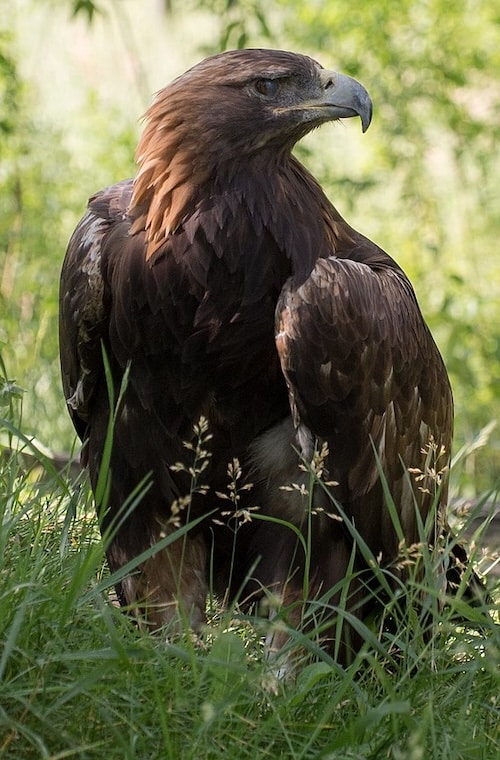
Albania is a country in Southeast Europe. It is located in the Balkans, on the Adriatic and Ionian Seas within the Mediterranean Sea, and shares land borders with Montenegro to the northwest, Kosovo to the northeast, North Macedonia to the east and Greece to the south. It has an area of 28,748 km2 (11,100 square miles), with a current (2025) population of c. 2.8 million people. It has a varied range of climatic, geological, hydrological and morphological conditions. Albania’s landscapes range from rugged snow-capped mountains in the Albanian Alps and the Korab, Skanderbeg, Pindus and Ceraunian Mountains, to fertile lowland plains extending from the Adriatic and Ionian seacoasts. Mount Korab, rising at 9,068.24 feet above the Adriatic, is the highest point, while the Mediterranean Sea is the lowest. The country extends 148 km (92 miles) from east to west and around 340 km (211 miles) from north to south. Tirana is the capital and largest city with a metropolitan population of around 500,000, followed by Durrës, Vlorë, and Shkodër.
In the northwest is Lake of Shkodër, Southern Europe’s largest lake. Towards the southeast is Lake of Ohrid, one of the world’s oldest continuously existing lakes. Farther south are the Large and Small Lake of Prespa, some of the Balkans’ highest lakes. Rivers rise mostly in the east and discharge into the Adriatic and Ionian Seas. The country’s longest river, measured from mouth to source, is the Drin, which starts at the confluence of its two headwaters, the Black and White Drin. The Vjosë is one of Europe’s last intact large river systems.
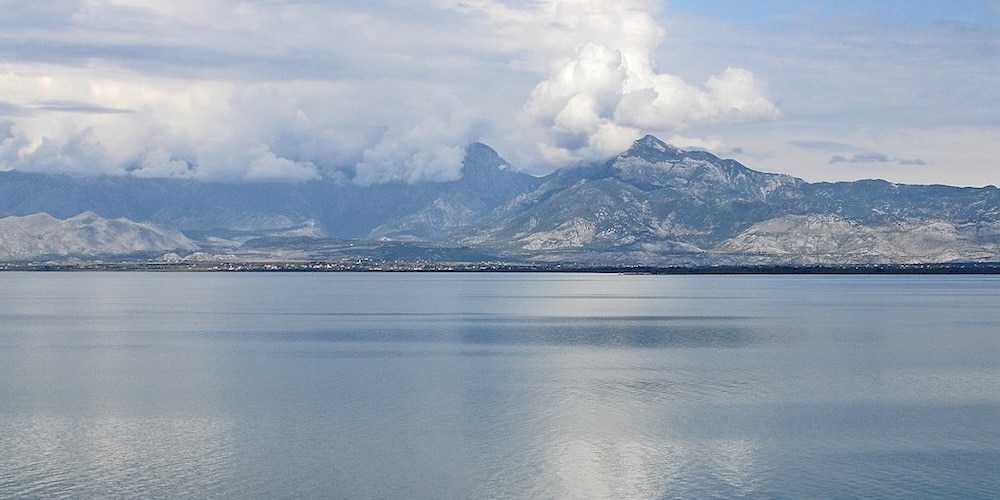
Lake Shkodër – ©net_efekt CC BY 2.0 via Wikimedia Commons
Forest cover is around 30% of the total land area, equivalent to c.789,000 hectares of forest. Of the naturally regenerating forest, 11% is primary forest, none of which is within protected areas. Almost all of the forest is in public ownership, just 3% is privately owned.
The climate of Albania is diverse due to the differences in latitude, longitude and altitude. It is primarily a Mediterranean and Continental climate, characterised by the presence of four distinct seasons and encompasses five primary climatic types, spanning from Mediterranean and subtropical in the western half to oceanic, continental and subarctic in the eastern half of the country. The coastal regions along the Adriatic and Ionian Seas are the warmest areas, while the northern and eastern regions encompassing the Albanian Alps and the Korab Mountains are the coldest areas in the country. Throughout the year, the average monthly temperatures fluctuate, ranging from −1 °C during the winter months to 22 °C in the summer months.
Albania receives most of the precipitation in winter months. The average precipitation is about 58.5 inches. The mean annual precipitation ranges between 24 and 118 inches depending on location. The northwestern and southeastern highlands receive the most, while the northeastern and southwestern highlands as well as the Western Lowlands are more limited.
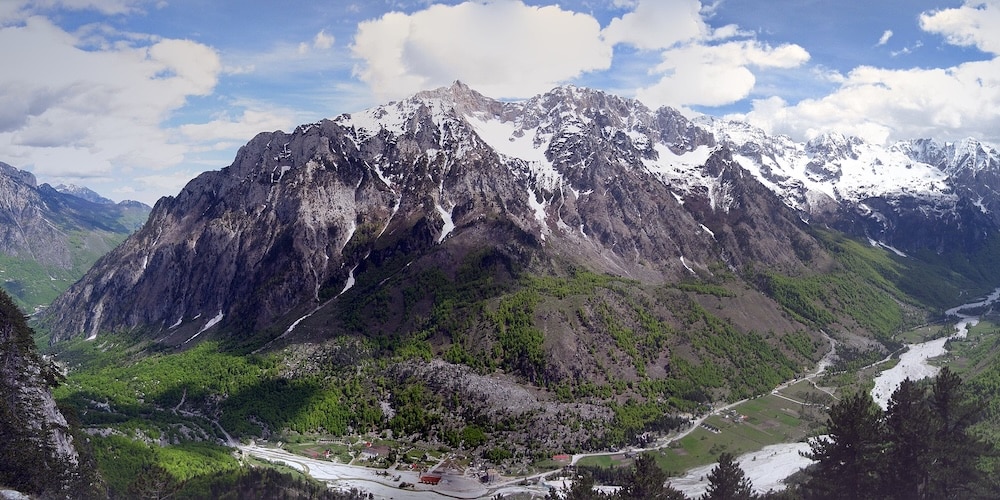
Albanian Alps – ©Regularcheese CC BY-SA 4.0 via Wikimedia Commons
The Albanian Alps in the far north of the country are considered to be among the most humid regions of Europe, receiving at least 122 inches of rain annually. Four glaciers within these mountains are at a relatively low altitude of 6,600 feet, which is almost unknown for such a southerly latitude.
Birding Albania
A biodiversity hotspot, Albania possesses an exceptionally rich and contrasting biodiversity on account of its geographical location and the great diversity in its climatic, geological and hydrological conditions. Because of remoteness, the mountains and hills of Albania retain forests, trees and grasses that are essential habitat for a wide variety of animals, including two of Europe’s most endangered species, lynx and brown bear, as well as the wildcat, grey wolf, red fox, golden jackal, Egyptian vulture and golden eagle, the latter being the national animal. Its estuaries, wetlands and lakes are extraordinarily important for Greater Flamingo, Pygmy Cormorant and the extremely rare and perhaps the most iconic bird of the country, the Dalmatian Pelican. Also of importance are the Mediterranean monk seal, loggerhead sea turtle and green sea turtle that may still nest on the country’s coastal waters and shores.
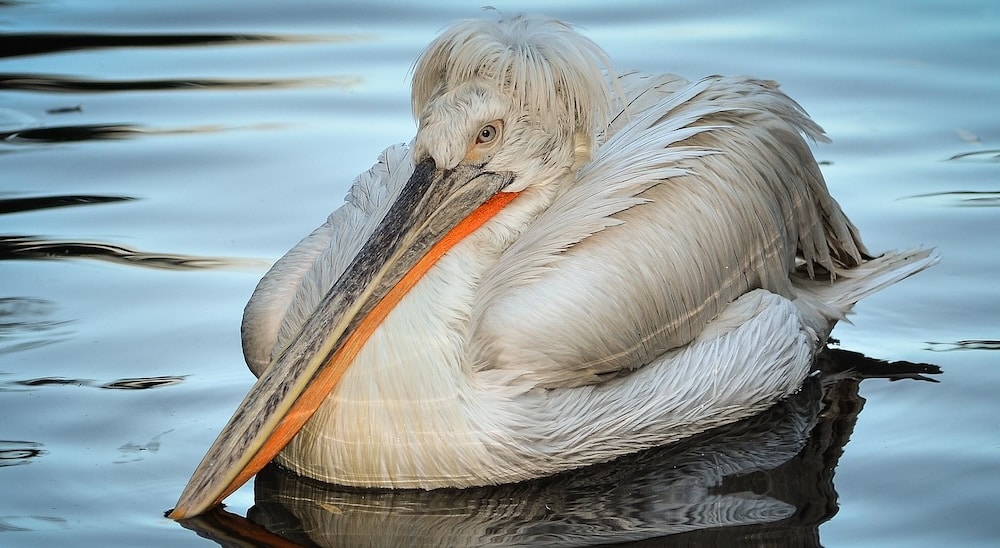
Dalmatian Pelican Pelicanus crispus – ©Olaf Oliviero Riemer CC BY-SA 3.0 via Wikimedia Commons
In terms of phytogeography, Albania is part of the Boreal Kingdom; specifically, within the Illyrian province of the Circumboreal and Mediterranean Region. Its territory can be subdivided into four terrestrial eco-regions of the Palearctic realm namely the Illyrian deciduous forests, Balkan mixed forests, Pindus Mountains mixed forests and Dinaric Mountains mixed forests. The trees within the forests are primarily fir, oak, beech and pine. Approximately 3,500 different species of plants can be found in Albania. At the minimum 300 plants growing locally are used in the preparation of herbs and medicines.
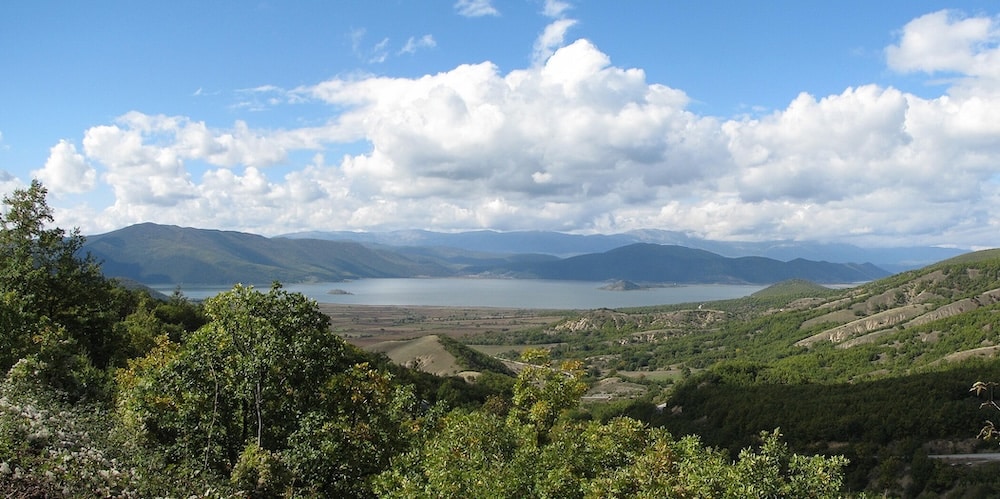
Prespa National Park – ©stefg74 CC BY 2.0 via Wikimedia Commons
Albania has developed and implemented a comprehensive National Biodiversity Strategy and Action Plan (NBSAP). Furthermore, in partnership with the International Union for Conservation of Nature (IUCN), the country has made substantial progress in the foundation of protected areas within its boundaries, encompassing 12 national parks including Butrint, Karaburun-Sazan, Llogara, Prespa and Vjosa. As a signatory to the Ramsar Convention, Albania has designated as Wetlands of International Importance, Buna-Shkodër, Butrint, Karavasta and Prespa. They have also designated a biospehere reserve – the Ohrid-Prespa Transboundary Biosphere Reserve. There are a further 786 other types of reserves. The forests are home to a wide range of mammals, including wolves, bears, wild boars, wildcats, pine martens and polecats. Chamois is present in alpine meadows and slopes. The avifauna is very rich, with 364 species of birds recorded in the country. Coastal wetland along the Adriatic coast are particularly important for numerous waterbirds and other species. Those wetlands compose a main route of migratory birds, also known as the Eastern Adriatic Flyway. Most of the major wetland sites of Albania are recognised as Important Bird and Biodiversity Areas.

Divjaka-Karavasta National Park – ©Nicolas Vollmer CC BY 2.0 via Wikimedia Commons
Some major bird destinations include Divjaka–Karavasta home to the Dalmatian Pelican and other colonially nesting waterbirds, Narta for breeding waders and gulls, Gjirokastra home to the globally endangered Egyptian Vulture and other birds of prey, Shkodra region for waterbirds and passerines around lakes and in forests and alpine areas, Prespa Lakes for waterbirds and songbirds and species using reedbeds, mountainous forest and alpine meadows.
-
Butrinti National Park
InformationSatellite ViewButrint is located in the south of Albania, on the coast opposite the island of Corfu (which is Greek). It is an especially interesting site as it has one of the best Greek/Roman ruins (currently being improved by a British archeological foundation) in the Mediterranean, and which is part of the Butrint National Park. The park encompasses a typical Mediterranean coastal wetland, which is being referred for Ramsar status. The website has a birdlist for the park. Anyone birding Corfu could easily get there via the ferry from Corfu to Saranda (not far), in Albania. Taxis to the site (24 kms) are quite cheap and there is even a very cheap local bus if you are prepared to wait. The wetland and surrounding hills have footpaths which are marked on the informative park leaflet (in English). The area is peaceful, as are the local people, and very definitely non-threatening and a visit can combine high class birding and a superb cultural experience.
-
Top Site - Paul Mollatt
UK | paul_mollatt@hotmail.com
-
Julian Trushi
Albanian Ornithological Society (AOS) | julian.trushi@aos-alb.org
Albanian Ornithological Society
-
Number of bird species: 364
(As at March 2025)National Bird: Golden Eagle Aquila chrysaetos
-
Albanian Ornithological Society
Annotated List355 bird species have been registered in Albania so far. Nevertheless, only circa 315 species are regularly observed. The rest are either very rare or not observed during the last 10-15 years. -
Avibase
PDF ChecklistThis checklist includes all bird species found in Albania , based on the best information available at this time. It is based on a wide variety of sources that I collated over many years. I am pleased to offer these checklists as a service to birdwatchers. If you find any error, please do not hesitate to report them. -
E-Bird
PDF ChecklistThis checklist is generated with data from eBird (ebird.org), a global database of bird sightings from birders like you. If you enjoy this checklist, please consider contributing your sightings to eBird. It is 100% free to take part, and your observations will help support birders, researchers, and conservationists worldwide. -
Wikipedia
Annotated ListThis is a list of the bird species recorded in Albania. The avifauna of Albania include a total of 361 species, of which one has been introduced by humans. 19 species are globally threatened.
-
Birds of Europe, North Africa, and the Middle East
| Photographic Guide | By Frédéric Jiguet & Aurélien Audevard | PUP | 2017 | Paperback | 447 pages, 2200 colour photos, colour distribution maps | ISBN: 9780691172439 Buy this book from NHBS.com -
Collins Bird Guide
| By Lars Svensson | Harper Collins | Edition 3 | 2023 | Paperback | 478 pages, 4000+ colour illustrations, 700 colour distribution maps | ISBN: 9780008547462 Buy this book from NHBS.com

Collins Bird Guide
AndroidThe Collins Bird Guide App provides everything you need to identify a species quickly and learn about it thoroughly.
Collins Bird Guide
Apple iOS |Collins Bird Guide 4+ A field guide to Europe NatureGuides Ltd. Designed for iPadOrganisations-
Albanian Ornithological Society
WebsiteThe society exists to identify and provide practical, theoretical, institutional and legal alternatives for long-term solutions in the protection and enhancement of bird community and their critical habitats, biodiversity, nature and environment in Albania and to work closely with all the stakeholders for the sustainable use of natural resources. -
Preservation and Protection of Natural Environment in Albania
WebsiteCenter for Protection and Research of birds, Preservation and Protection of Natural Environment in Albania, Macedonian Ecological Society and Ornithological society „Naše ptice" will jointly implement the project "Birds Without Borders-BWB" in the next 9 month with the aim to empower and strenghten cross border cooperation of environmental civil society organization working on birdlife protection in the Western Balkans.
Reserves-
*Protected areas of Albania
InformationSatellite ViewInteractive links to national parks, nature reserves etc. -
IBAs - Albania
InformationSatellite ViewBirdLife International's annotated list of IBAs in Albania. -
NP Butrint
InformationSatellite ViewButrint nature park boasts a high degree of biodiversity, with the presence of rare species under preservation, which make the site attractive for eco-tourists and naturalists… -
NP Divjakë-Karavasta
InformationSatellite ViewThe wealth of fauna is represented by 228 species of birds, 25 species of mammals, 29 species of reptiles and 29 species of amphibians. -
NP Hotovë-Dangelli
InformationSatellite ViewThe old growing trees throughout the park preserves a wide variety of bird species. Most notable amongst them are the golden eagle, eagle owl, barn owl, sparrowhawk, Egyptian vulture, kestrel, lanner falcon and so on -
NP Hotovë-Dangelli
InformationSatellite ViewDue to its favorable ecological conditions and the mosaic distribution of various types of habitats, it is characterized by exceptionally rich and varied fauna. The forests are the most important habitats for mammals like wild cat, roe deer, wild boar, red squirrel, eurasian otter and badger. Brown bear, gray wolf and red fox can also be seen on the pastures deep inside the forest.[5] The old growing trees throughout the park preserves a wide variety of bird species. Most notable amongst them are the golden eagle, eagle owl, barn owl, sparrowhawk, egyptian vulture, kestrel, lanner falcon and so on. -
NP Prespa
InformationSatellite ViewClassified as an Important Bird Area, however, birds are without question the park's most numerous class of animal with more than 270 species. Approximately 132 of the bird species utilising the park can be classified as breeding species and the remaining species are either resident or non-breeding visitors to the park. The white and Dalmatian pelican, which is one of the largest bird species in the world, spend the summer season in the lakes of the park associated with the undisturbed wetlands, freshwater marshes and permanent streams. -
NP Shebenik-Jabllanicë
InformationSatellite ViewDiverse birds range across different habitats, while the close proximity of trees, especially beech and pines, affords them good nesting opportunities. The golden eagle is found in areas with rocky terrain and mountains, while short-toed snake eagle is found wherever there are large bodies of water. The peregrine falcon is both a resident and a visitor of the national park, and nests notably on cliffs and rocks. -
NP Theth
InformationSatellite View50 species of birds have been observed, with raptors such as the golden eagle, lesser kestrel, nuthatch, robin, blackbird, red-backed shrike, western capercaillie and rock partridge. -
NP Tomorr
InformationSatellite ViewTomorr is an anticline composed of limestones and karst. The mountain is one of the highest natural points of southern Albania, rising between the valleys of the rivers Osum and Tomorrica in the east close to Berat. Numerous species of large mammals such as wolves, foxes, wild boars, roe deers, wild goats, rabbits, golden eagles, owles, and sparrowhawks can be found inside the national park. -
NP Valbonë Valley
InformationSatellite ViewDue to the temperature and climate differences between different areas and elevations, the park is characterized by exceptionally rich and varied fauna. The park represents one of the most important national bio centers of wild fauna in the country. The total number of bird species is 145. Important birds of prey with high conservation value include the golden eagle, booted eagle, Egyptian vulture, sparrowhawk, goshawk, lanner falcon, saker falcon, peregrine falcon and honey buzzard. The park hosts seven species and populations owls, such as the barn owl, scops owl, eagle owl, little owl, tawny owl, long-eared owl and short-eared owl. Other families of birds inhabiting the park include the alpine swift, alpine accentor, great cormorant, grey heron, rock partridge, common ringed plover, stock dove, common cuckoo and eurasian golden oriole -
NP Zall-Gjoçaj
InformationSatellite ViewAlthough small in size, it is abundantly rich in its biodiversity and habitat. Most of the park's land area is covered by a mixture of beech, fir, pine, ash and maple trees growing on limestone and dolomite. The park's woods are important because they provide shelter for numerous fauna. Most notable amongst them is the brown bear and grey wolf. Other large mammals include lynxes, roe deers and birds such as the golden eagle. -
NR Gashi River
InformationSatellite ViewThe nature reserve forms a part of the European Green Belt and has been declared a UNESCO World Heritage Site within the Primeval Beech Forests of the Carpathians and Other Regions of Europe. The fauna is represented by 64 species of mammals, such as the brown bear, gray wolf, chamois, lynx, roe deer, wild boar, western capercaillie, golden eagle, eurasian otter and 14 species of amphibians... -
NR Karaburun Peninsular
InformationSatellite ViewThe landmass of the peninsula is designated as nature reserve, while the shoreline and its surrounding sea waters are part of the marine park. -
NR Kunë-Vain-Tale
InformationSatellite ViewThe nature reserve was established in 2010, it encompasses the Kunë Island, the Kunë-Vain lagoon, the woodlands, and several ecosystems. It has been identified as an Important Bird Area by BirdLife International with 196 species of birds. -
NR Lake Shkodër Nature Reserve
InformationSatellite ViewThe protected area encompasses the Albanian segment of Lake Skadar (14,900 ha) and the adjoining Buna River and plain (11,635 ha), including water and land areas. -
Wetland of International Importance
WebpageSatellite ViewThe Convention on Wetlands came into force for Albania on 29 February 1996. Albania presently has 4 sites designated as a Wetlands of International Importance.
Sightings, News & Forums-
eBird
SightingseBirding This Month
Guides & Tour Operators-
Albanian Trip
Local Tour OperatorWe’re offering a day tour to bring you to some of Albania’s best bird-watching areas. Drop us an email to give us more details about when you are coming and how many people are in your group! Depending on the season and where the higher activity of birds is, we will adapt this day according to your needs. -
Birding Albania
Local Tour OperatorWelcome to Birding Albania – your expert tour agency for unforgettable birdwatching and eco tours in Albania and neighboring countries. Explore breathtaking landscapes, from coastal wetlands to alpine meadows and mountain forests, while spotting rare bird species and experiencing the warmth of Balkan hospitality. -
EcoTours
Tour OperatorAlbania & Montenegro -
NatureTrek
Tour OperatorAn 8-day holiday to the exciting destination of Albania to enjoy the spectacular autumn bird migration at the country's key birdwatching destinations. -
TAB Travel
Local Tour OperatorAlbania Bird Watching and Wildlife Tour -
The Travelling Naturalist
Tour OperatorIt seems remarkable that the beautiful country of Albania is only now opening up to tourism.
Trip Reports-
2019 [04 April] - Andy Smith
Report PDF...A short roadside stop brought Corn Buntings, Kestrels and a Lesser Whitethroat, then we were winding our way up into the beautiful Valbone valley where we arrived at sunset with a little time to settle in before dinner... -
2019 [06 June] - Neil Anderson
Report PDF…We had a substantial lunch at Karavasta which was much enjoyed. Around the restaurant we heard Golden Oriole singing and saw Spotted Flycatcher and Woodchat Shrike... -
2024 [04 April] - Andy Smith
Report PDF...After settling in we took a stroll down to the nearby lagoon where we were met by an impressive range of birds including over 100 Greater Flamingos, several Pygmy Cormorants, three Caspian Terns, a lone Dalmatian Pelican & masses of assorted waders... -
2024 [04 April] - John Lee
Report PDFI self-birded throughout, content to simply see what I found. I used Ebird and BirdsEye to get a general idea of hotspots but Albania is relatively undiscovered as a birding destination so information is limited...
Other Links-
Best bird watching trails in Albania
InformationExplore the most popular bird watching trails in Albania with hand-curated trail maps and driving directions as well as detailed reviews and photos from hikers, campers and nature lovers like you. -
Narte Lagoon
WebpageDescription › Details › Map › Top 5 birds › All birds › Gallery › Comments & Tips › Go there › Description Narta Lagoon (Albanian: Laguna e Nartës) is a lagoon of the Adriatic Sea on the Mediterranean Sea in the central coast of Albania. -
Orniverse
WebpageBirding in Albania offers a captivating experience for nature enthusiasts. Situated in the heart of the Balkan Peninsula, this picturesque country boasts diverse geography and biogeography, making it a paradise for birdwatchers. From soaring mountains to pristine coastlines, Albania's landscapes host a remarkable range of habitats.
Fatbirder - linking birders worldwide...
Skip to content
